Recent News
Read the latest news and stories.
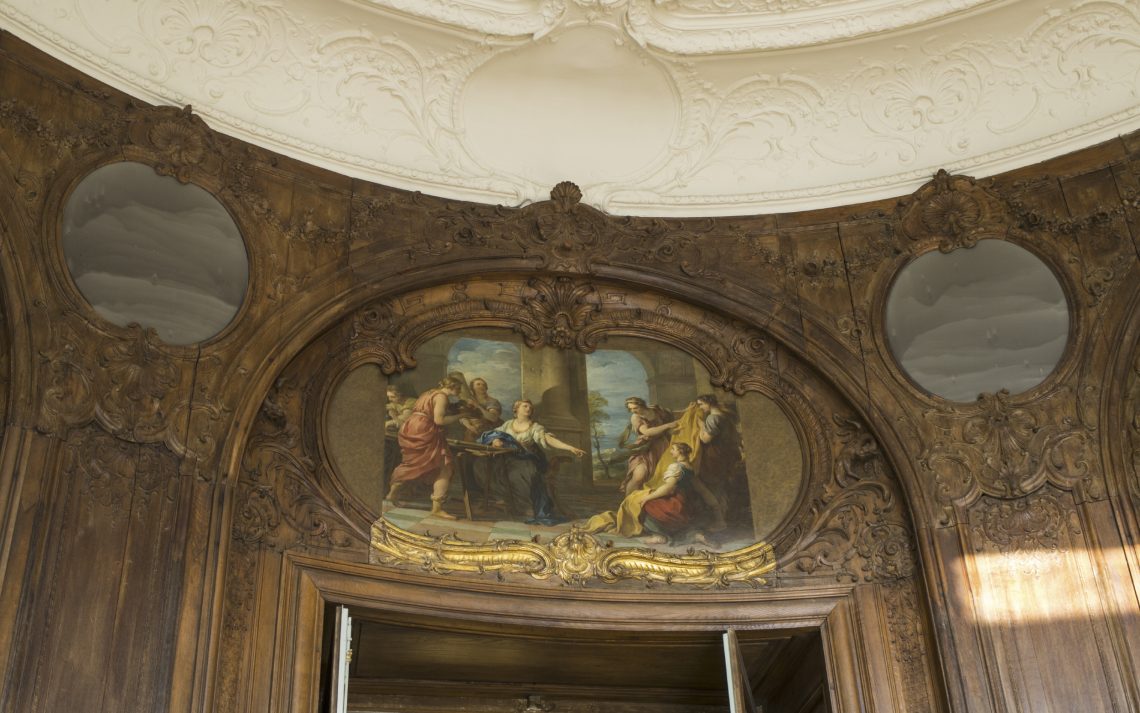
The Danaid Salon at the Rodin Museum
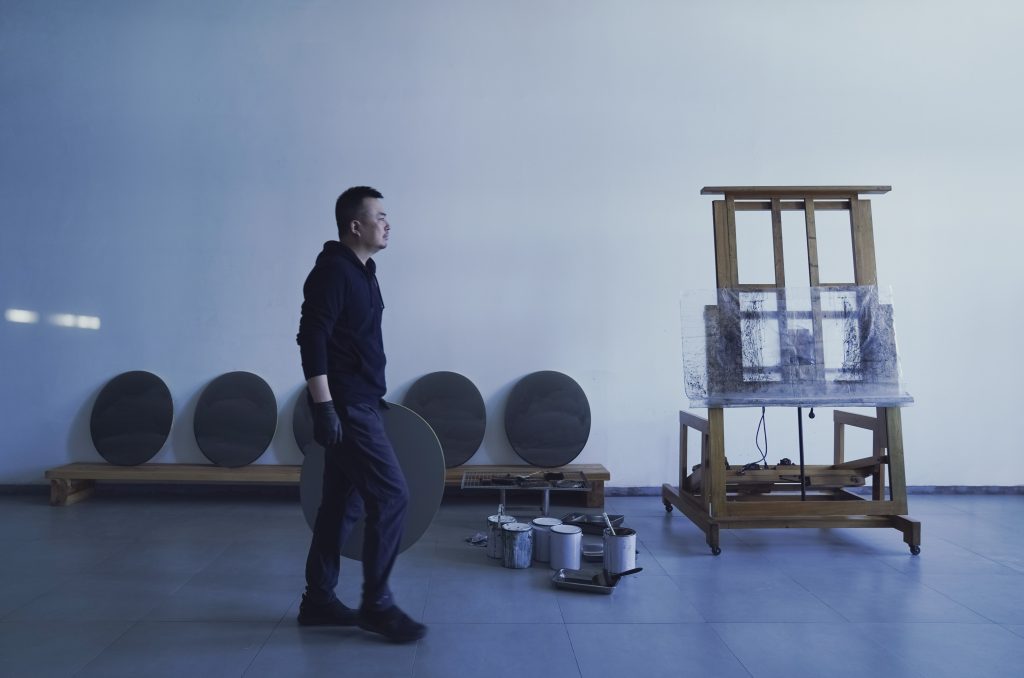
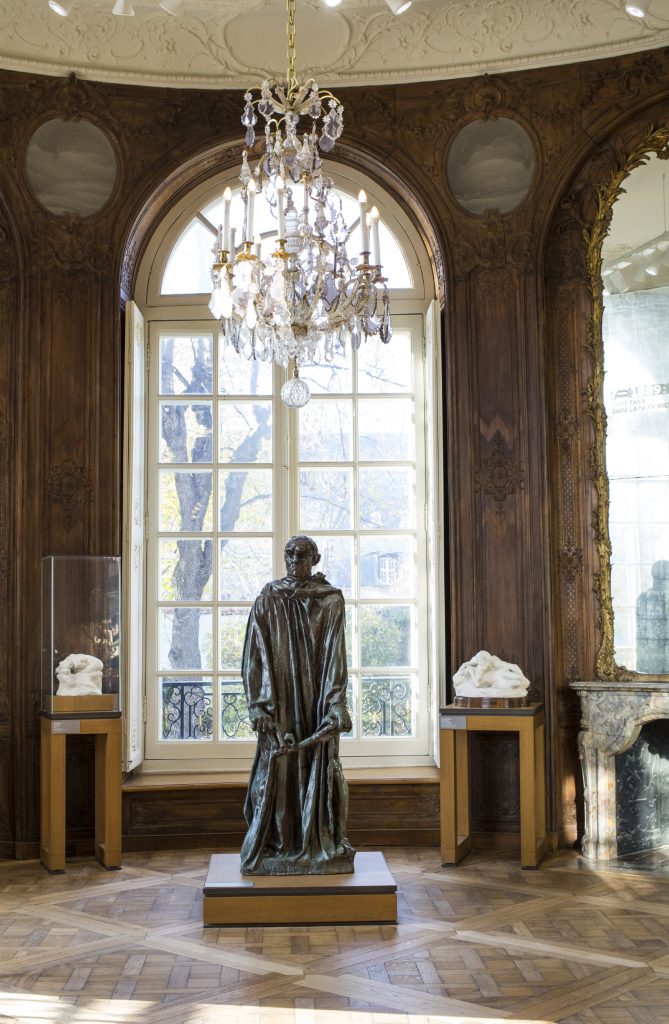
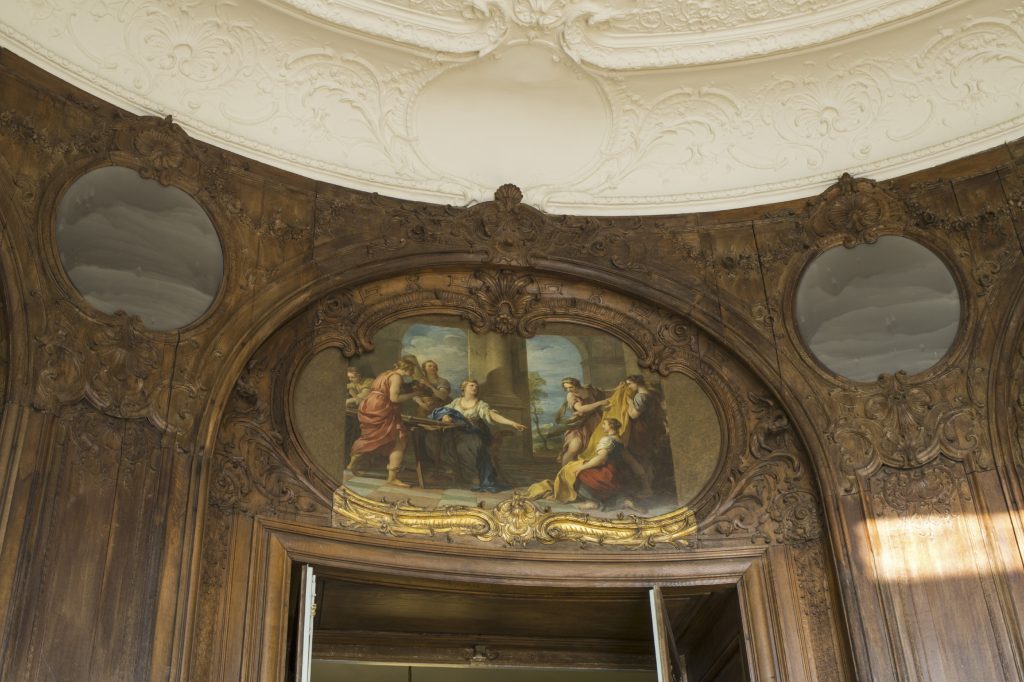
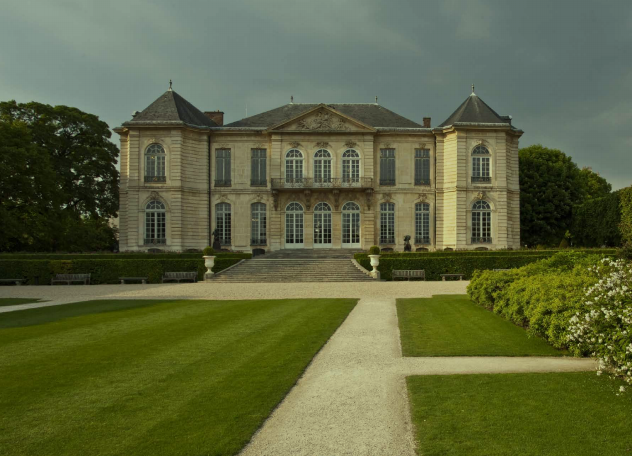
The Danaid Salon at the Rodin Museum
Henry-Claude Cousseau
It’s indeed more than appropriate to have Li Xin, the Chinese “Painter of Water”, assigned to decorate the salon on the southern side of the Hôtel Biron’s ground floor. The oval space takes its name from the presence of Danaid (1885), a piece of sculpture by Auguste Rodin also known as The Source. Famous mythological figures condemned to eternally carry water with leaking jugs, the Danaids appear here in a collective form – a naked woman, her body prostrate and her hair spreading on the ground. The presence of the jug besides her explicitly illustrates a double metamorphosis: the Danaid is both a source and a spring, a metaphor for the incessant and desperate efforts that attach to human survival.
Under the salon’s ceiling cornice and on the spandrels formed between windows and mirrors, there is a series of slightly ovate medallions, embedded in old woodwork, that Li Xin was invited to intervene on. It is a collection of eight paintings that could be called “grisailles”, which present ridge- and cloud-like landscapes. Though uncertain and dreamlike, their horizons are transparent and smooth, and are dotted with accidental details that look like tiny craters – left by the impact of falling paint drops when the painter was about to exercise his brush.
The confrontation between painting and sculpture, often deliberately pursued, always shows the fascination that these two opposing practices exert on themselves to mimic one another. However, through expressions of cultural and aesthetic gaps, Li Xin’s intervention gives the confrontation renewed meanings. One of sculptors’ key approaches is to superbly ignore the natural features of the materials they’re working with. It is by antithesis that Auguste Rodin sought to use marble to express fluidity in Danaid, transforming stone into water and making it spring from the earth as if water were flowing through Danaid’s hair to where her body comes into contact with the ground.
As the “Painter of Water”, Li Xin engaged in a seemingly less blatant but equally decisive challenge. In fact, he presented a metamorphosis which echoes Rodin’s piece, and, to a certain extent, continued and celebrated the sculptor’s creative intent with seductive symmetry.
In traditional Chinese culture, water is not only a key element of ink painting, but also an enchanting theme of the art form – it embraces varying forms of existence in mountain-water landscapes: seas, rivers, waterfalls, mists, fogs, and even floating clouds. Clouds and mists are born from ridges and mountains, places that they share harmonized destiny with and where water finds its origin.
By intentionally resorting to a technique antithetical to that of water and that of oil painting to secure similar effects, Li Xin found himself forced to translate his language, to transpose images which are specific to him only, and to realize a metamorphosis of visual effects – through what could be called “painting of painting”. Such a clever stratagem was made possible only by Li Xin’s perfect knowledge of ink painting and oil painting’s theoretical and visual properties, which also enabled him to propose an unprecedented dialogue between two completely-opposed pictorial traditions.
But the other difficulty that the painter had to face here is how to produce a perfect homogeneity between the paintings. The series’ pictorial argument is self-contradictory, as it confronts stability with movement, fixity with progression, and the permanent landscape motif with the dynamics of the gesture that creates it.
But Li Xin achieved this by using a process as simple as it is subtle, which consists of covering the canvas with horizontal stripes using a large soft brush and sufficiently liquid pigments. By overlapping color layers, these strips produce modulations and accidents that bring out an open space, animated by the stains, runs, drops and ripples of the brush.
He then applied the lightness of the glazes to introduce the luminous transparency that makes the paintings vibrant, in a texture of green-gray jade that responds as well to the waxy velvety texture of the marbles as to that of the bronze. For his creative approach, Li Xin likes to rephrase a famous line by Rabindranath Tagore – for birds in the sky, a painter doesn’t need to capture the “trace of wings in the air”, but the moment of their passage.